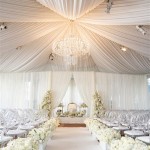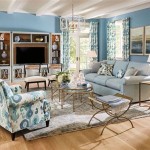How To Decorate Around A Wall Mount TV
Wall-mounted televisions have become ubiquitous in modern homes, offering a sleek, space-saving alternative to traditional entertainment centers. However, a bare wall with a floating TV can often appear sterile and unfinished. Integrating a wall-mounted television seamlessly into a room's design requires careful consideration and planning. The following outlines strategies for decorating around a wall-mounted TV effectively, enhancing both its functionality and aesthetic appeal.
The primary goal of decorating around a wall-mounted TV is to create a balanced and visually pleasing focal point. This involves considering the size and placement of the television, the overall style of the room, and the available space. The decoration should complement the TV without overwhelming it, ensuring that the viewing experience remains paramount.
Camouflaging The Television
One approach to decorating involves camouflaging the television, minimizing its visual impact when it's not in use. This is particularly useful in spaces where the television is not the primary focus or in rooms with a more traditional aesthetic. Several techniques can be employed to achieve this.
A popular method involves creating a gallery wall around the television. The TV can be incorporated among an assortment of framed artwork, photographs, and decorative objects. Careful planning is crucial to ensure the arrangement is balanced and cohesive. Consider using a variety of frame sizes, colors, and textures to add visual interest. The television should blend in as much as possible with the surrounding elements, rather than standing out as a separate entity.
To successfully integrate the television into a gallery wall, it’s important to consider the color palette of the surrounding art. Choose pieces that share similar hues or tones to create a sense of harmony. Alternatively, incorporating black and white photographs can complement the dark color of the television screen, helping it to recede into the background. When arranging the gallery wall, ensure that the television is positioned at eye level for comfortable viewing. Leave adequate space between the television and surrounding objects to prevent overheating and allow for easy access to cables and connections.
Another strategy is to conceal the television behind a decorative panel or sliding doors. These options offer a more dramatic approach, completely hiding the television when it is not in use. A custom-built cabinet or a repurposed armoire can effectively conceal the TV, transforming the wall into a functional storage unit or a stylish decorative element. When the television is needed, the panel or doors can be easily opened to reveal the screen. This method is particularly appealing for those who prefer a minimalist aesthetic or wish to maintain a clutter-free living space.
For a more subtle camouflage, consider painting the wall behind the television a dark color. This can help the television blend into the background, making it less noticeable when it is turned off. Dark gray, navy blue, or even black can be effective choices, depending on the overall color scheme of the room. This approach works particularly well in media rooms or home theaters where a darker ambiance is preferred. In addition, the dark background can enhance the contrast of the television screen, improving the viewing experience.
Adding Decorative Elements
An alternative approach involves enhancing the wall around the television with decorative elements, drawing attention away from the screen and creating a more visually engaging space. This allows the TV to remain visible but integrates it into a more complete and interesting design.
Shelving is a versatile and functional option for decorating around a wall-mounted television. Floating shelves can be installed above, below, or alongside the television, providing space for displaying books, decorative objects, plants, and other personal items. The shelves can be arranged in a symmetrical or asymmetrical pattern, depending on the desired aesthetic. Ensure that the shelves are securely mounted and can support the weight of the items placed on them. The color and material of the shelves should complement the television and the overall style of the room.
When styling shelves around a television, consider the principles of visual balance and proportion. Avoid cluttering the shelves with too many items, as this can create a distracting and overwhelming effect. Instead, opt for a curated selection of objects that reflect your personal style and interests. Vary the heights and textures of the items to add visual interest. Introduce pops of color through decorative accents or plants to brighten up the space. Consider using baskets or decorative boxes to conceal cables and other unsightly items.
Another option is to incorporate a statement piece of artwork or a decorative mirror alongside the television. This can serve as a counterpoint to the television screen, drawing the eye and adding visual interest to the wall. The artwork should be chosen carefully to complement the television and the overall style of the room. A large-scale abstract painting or a bold graphic print can make a striking statement, while a more subtle landscape or portrait can create a more relaxed and serene atmosphere. The mirror can reflect light and create the illusion of more space, making it a particularly useful addition to smaller rooms.
Adding texture to the wall behind the television can also enhance its visual appeal. This can be achieved through various means, such as applying textured wallpaper, installing wood paneling, or using a decorative wall finish. Textured wallpaper can add depth and dimension to the wall, creating a more tactile and engaging surface. Wood paneling can bring warmth and richness to the space, adding a touch of natural beauty. A decorative wall finish, such as Venetian plaster or lime wash, can create a unique and sophisticated look. The texture should complement the television and the overall style of the room, avoiding anything too distracting or visually overwhelming.
Addressing Cable Management
Proper cable management is essential for creating a clean and organized look around a wall-mounted television. Visible cables can detract from the overall aesthetic, making the space appear cluttered and unfinished. There are several ways to conceal and manage cables effectively.
One of the simplest and most effective methods is to use cable concealers. These are typically plastic channels that can be mounted to the wall to hide cables and wires. Cable concealers come in various sizes and colors, allowing you to choose the option that best fits your needs and décor. They can be painted to match the wall color, making them virtually invisible. Cable concealers are easy to install and can be a cost-effective solution for managing cables.
Another option is to run the cables through the wall. This involves drilling holes in the wall behind the television and the outlet, and then running the cables through the holes. This method provides a clean and seamless look, completely concealing the cables from view. However, it requires more effort and skill than using cable concealers. It is important to ensure that the cables are properly insulated and protected to prevent electrical hazards. Consider hiring a professional to perform this task if you are not comfortable with electrical work.
Using cable ties and clips can help to organize and bundle cables together, preventing them from becoming tangled and unruly. Cable ties can be used to secure cables to each other, while cable clips can be used to attach cables to the wall or furniture. These simple accessories can make a significant difference in the overall appearance of the space. Choose cable ties and clips that are discreet and blend in with the surrounding décor.
Investing in a surge protector with built-in cable management features can also be a helpful solution. These surge protectors typically have multiple outlets and cable management channels, allowing you to organize and protect your electronic devices. They can also prevent damage from power surges, which can be particularly important for expensive televisions and other electronic equipment. Choose a surge protector that is appropriate for the size and power requirements of your electronic devices.
Ultimately, decorating around a wall-mounted TV is a matter of personal preference and style. By considering the size and placement of the television, the overall style of the room, and the available space, it is possible to create a visually appealing and functional entertainment area. Employing strategies such as camouflaging the television, adding decorative elements, and addressing cable management can transform a simple wall into a stylish and inviting focal point. The integration of these elements should create a cohesive and balanced space where the television seamlessly blends into the overall design.

14 Simple And Modern Tv Wall Mount Ideas For Living Room

How To Decorate Around Your Wall Mounted Tv Mount It

Tv Mount Design Ideas For Your Home

Space Saving Wall Mount Tv Cabinet Designs Designcafe Design Living Room Unit Mounted

Creative And Modern Tv Wall Mount Ideas For Your Room Tvwallmount Tags Bedroom Units

16 Modern Tv Wall Mount Ideas For Your Best Room Archlux Net Design Living House Interior

16 Modern Tv Wall Mount Ideas For Your Best Room House Design Decor

Decorate With Intention Helping Your Tv Blend In

10 Ideas On How To Decorate A Tv Wall Decoholic

80 Modern Tv Wall Decor Ideas Interiorzine
Related Posts







